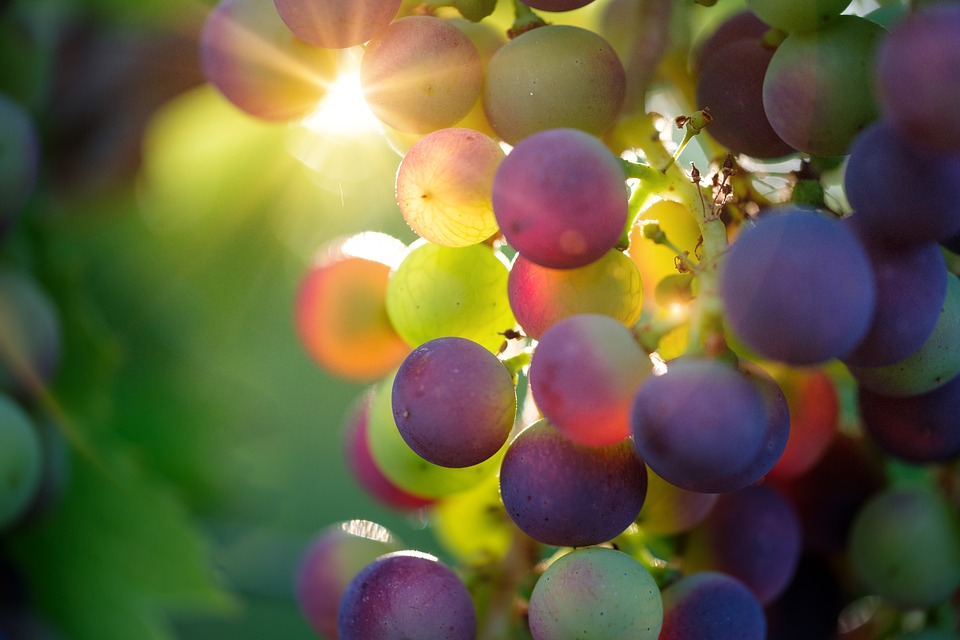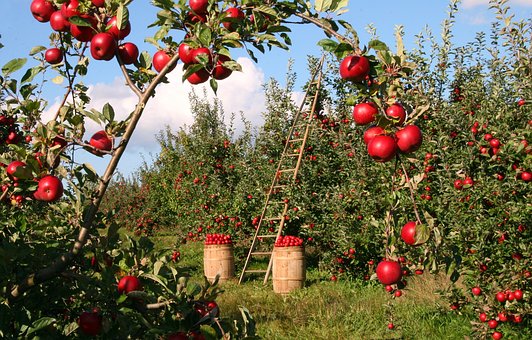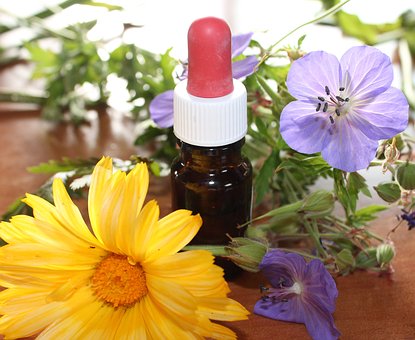Vitis vinifera
The vine or the grape is one of the most well known plants in the world. The grape grows as a shrub from one large vine, which is characterized by twisted stems that bear rather small, round and green branches with a lot of large and alternating placed palm shaped leaves. The vine also bears many tiny flowers that are grouped in a light green panicle on the stem. Grapes bear clusters of berries, which are the fruits; typically each berry is characterized by a variable color, which can go from being light green to deep blue, depending on the variety of grape. Each single berry in a grape berry cluster will contain about five and ten seeds, though seedless varieties have been bred and are much more common. The grape grows from a single vine, and original vines from very good stock can live for up to six hundred years at a time.
Tag: fruits
Crab Apple
Malus sylvestris
Crab apple is a small tree growing up to 10m. Crab apple likes light and space and so will often grow in hedges and clearings where a small group can stand together, self-sown with the help of birds who break up the fruits. Generally it resembles other apples, though the young leaves are only slightly hairy beneath and the young shoots are not covered by woolly down as they are in domestic apples or naturalized cider apples.
Catuaba
Erythroxylum catuaba
The tree known as the catuaba is a South American species of tree that grows in rain forests. This tree grows in the rain forests of Brazil and belongs to the same plant family as the famous coca plant – cocaine is an extracted from this plant. However, catuaba does not have the narcotic alkaloids that are present in the coca plant. Traditionally, the catuaba bark has been utilized in herbal medicine by the natives of Brazilian rain forests. A different tree, botanically known as the Erythroxylum catuaba is also found growing in the rain forests of South America. This vigorous and hardy small tree bears yellow and orange colored flowers and when in season, it also bears small oval shaped, dark yellow colored and inedible fruits.
BERGAMOT:
(Citrus bergamia) Bergamot has aromatic flowers and fruits. The thin, smooth peel yields Bergamot oil for “true” eau de Cologne and Earl Grey Tea.
Flavonoids
More than 4,000 flavonoids (or bioflavonoids, as they are sometimes called on supplement labels) have been identified, and scientists suspect that there may be many more still to be discovered in nature. Flavonoids give color to fruits, vegetables, and herbs and are found in legumes, grains, and nuts as well. They are also potent antioxidants some are even more powerful than vitamin C or vitamin E in preventing cell damage caused by unstable oxygen molecules (free radicals). So far only a few flavonoids have been investigated for their healing potential.




